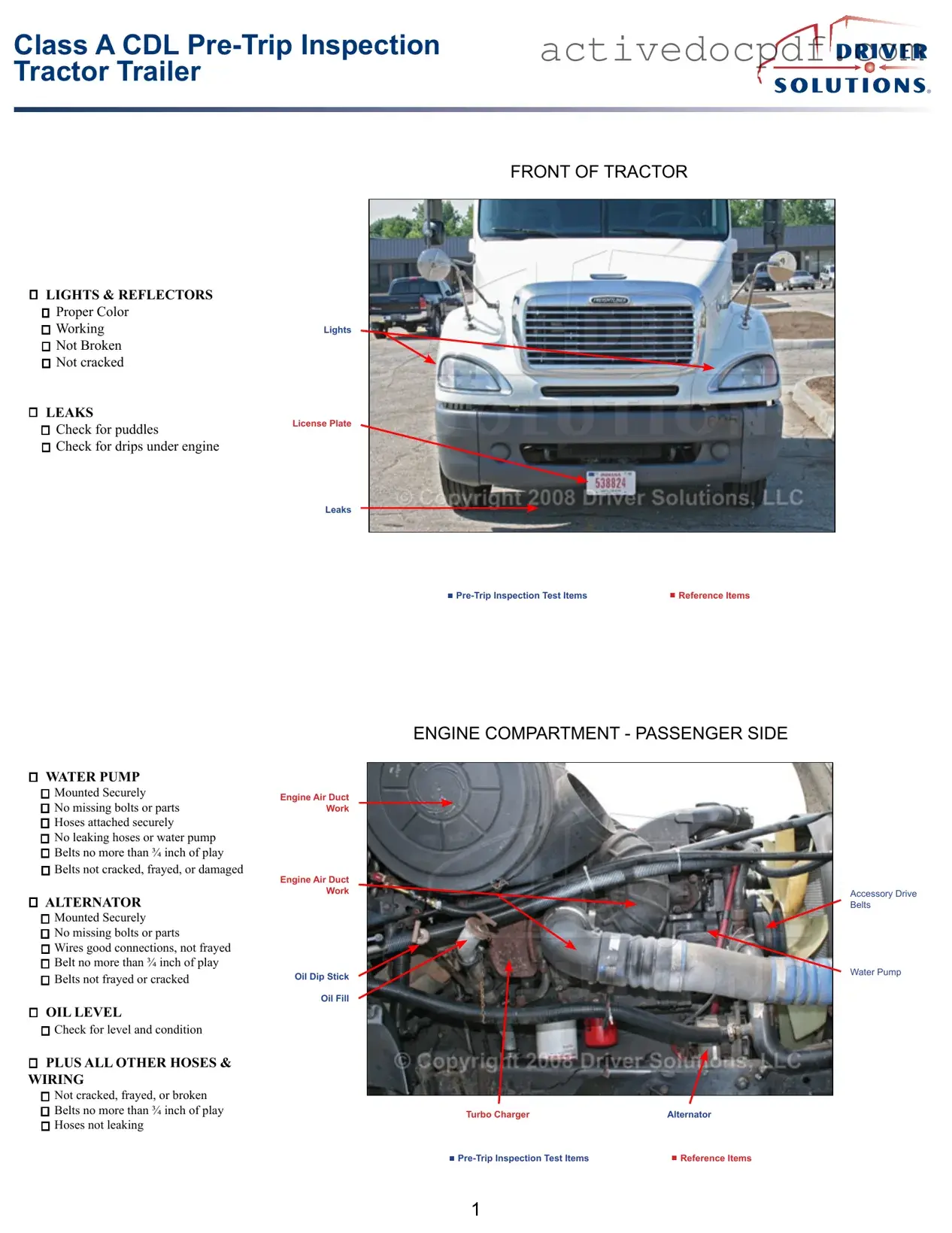The Pre Trip Inspection Checklist form is designed to ensure that vehicles are safe and ready for operation before they hit the road. By conducting a thorough inspection, drivers can identify any potential issues that could affect the vehicle's performance or safety. This proactive approach helps prevent accidents and breakdowns, ultimately promoting safer travel for everyone on the road.
Who is responsible for completing the Pre Trip Inspection Checklist?
Typically, the driver of the vehicle is responsible for completing the Pre Trip Inspection Checklist. However, it is also advisable for fleet managers or vehicle owners to ensure that drivers are properly trained in how to conduct these inspections. This collaborative effort enhances overall vehicle safety and accountability.
What items should be included in the Pre Trip Inspection Checklist?
The checklist generally includes a variety of critical components that need to be inspected. These items may include:
-
Exterior lights (headlights, brake lights, turn signals)
-
Tires (tread depth, inflation, visible damage)
-
Brakes (functionality and wear)
-
Fluid levels (oil, coolant, brake fluid)
-
Windshield wipers and washer fluid
-
Mirrors and windows (visibility and condition)
-
Emergency equipment (flares, first aid kit)
Drivers should tailor the checklist to meet the specific requirements of their vehicle and any applicable regulations.
How often should the Pre Trip Inspection Checklist be completed?
Drivers should complete the Pre Trip Inspection Checklist before every trip. This routine practice ensures that any issues are identified and addressed before the vehicle is used. Regular inspections contribute to the longevity of the vehicle and enhance safety for both the driver and others on the road.
What should a driver do if they find an issue during the inspection?
If a driver identifies any issues during the inspection, they should take immediate action. This may involve:
-
Documenting the issue on the checklist.
-
Reporting the problem to a supervisor or fleet manager.
-
Arranging for repairs before the vehicle is used.
Addressing issues promptly helps to ensure that the vehicle remains safe and operational.
While there is no universally mandated format for the Pre Trip Inspection Checklist, many organizations provide their own templates that meet safety regulations. These templates typically include sections for each item to be inspected, space for notes, and a signature line for the driver. It is important to use a format that complies with local and federal regulations.
Can the Pre Trip Inspection Checklist be completed digitally?
Yes, many companies now offer digital versions of the Pre Trip Inspection Checklist. These digital forms can streamline the inspection process, making it easier to record findings and store documentation. Additionally, electronic checklists can often be integrated with fleet management software, providing better tracking and analysis of vehicle conditions over time.
What are the consequences of not completing the Pre Trip Inspection Checklist?
Neglecting to complete the Pre Trip Inspection Checklist can lead to serious consequences. These may include:
-
Increased risk of accidents due to mechanical failure.
-
Legal repercussions if the vehicle is involved in an accident.
-
Potential fines for non-compliance with safety regulations.
Completing the checklist is not only a best practice but also a vital part of ensuring safety on the road.
How can drivers ensure they are thorough during the inspection?
To ensure a thorough inspection, drivers should familiarize themselves with the checklist items and understand the importance of each component. It may be helpful to follow a systematic approach, inspecting items in a consistent order. Additionally, drivers can benefit from training sessions that emphasize the importance of safety and detail-oriented inspections.
Where can I obtain a copy of the Pre Trip Inspection Checklist?
Copies of the Pre Trip Inspection Checklist can typically be obtained from your employer, fleet management, or relevant regulatory agencies. Many organizations also provide these forms online, allowing easy access for drivers. It is essential to use the most current version to ensure compliance with regulations.
